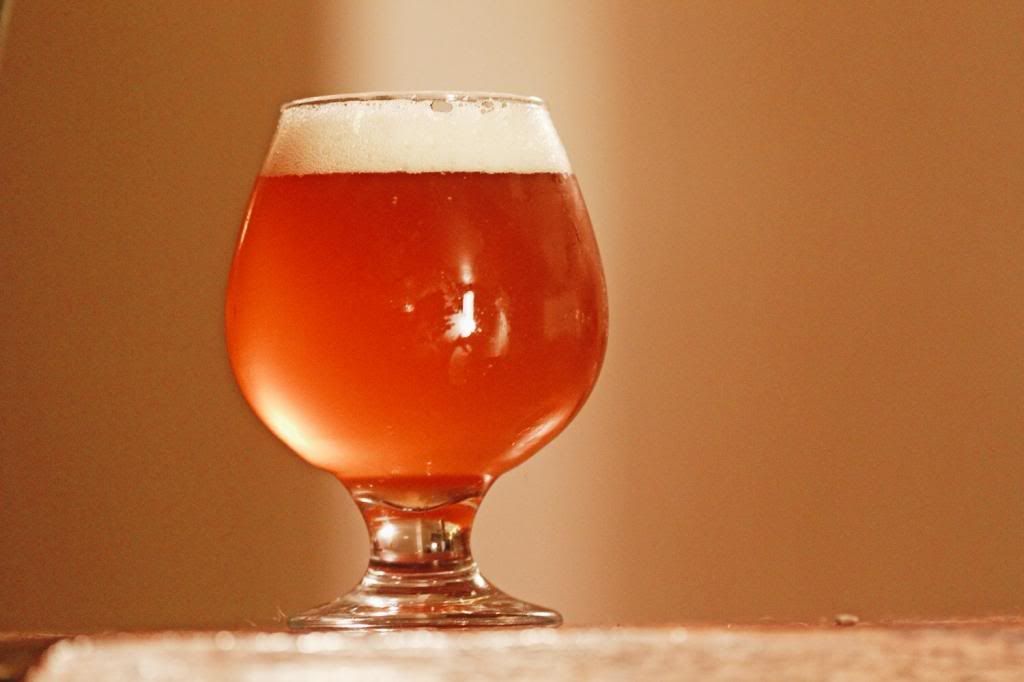In a recent article I wrote on beer and food pairings, I commented that beer was a better pair for food than wine because beer was a traditional farmhouse beverage. What I didn’t go in to at the time was—like all traditional farmhouse products—beer was therefore historically very closely and cyclically linked to the seasons. This was a result of many factors: hops were only harvested once a year, and fermentables like barley and wheat are also harvested on cycles corresponding to the seasons; because refrigeration didn’t exist yet, the ambient temperature outside would be the primary factor driving the fermentation profiles of the yeast; air-borne bacteria were more prevalent in certain climates at certain times of the year, and alcohol, spices, and hops (all of which are natural preservatives) were often used in higher amounts in beers to be consumed during these same periods; and, quite simply, some styles were more in demand at certain times of the year (whether a result of one’s palate, psychology, or marketing).
Dozens of styles of beer were created as a result of these cyclical realities that our brewing forefathers had to deal with before the advent of global supply chains, refrigeration, and sterilization. Many of these styles died out with the advent of these innovations; however, many became popular enough to survive and remain “seasonal” in nature even after the limitations that originally rendered them so were removed. Saison beers (the word literally means “season”) in Belgium, for instance, were brewed in either the spring or the fall as a result of wheat crop rotation. They were usually brewed to different strengths to be consumed in the summer or winter to provide a light, quaffable beverage to farm laborers and oftentimes a stronger, darker beer to cellar overwinter, respectively. Maibocks (again, literally, “May Bock,” the latter word referring to a beer that was as strong, metaphorically speaking, as a goat) and Märzen (“March,” here) were brewed in Bavaria, the former to be consumed to celebrate the arrival of the growing season in late spring and the latter to be brewed in the month of March to ensure an ample supply of strong, well-hopped beer that would store well and last throughout the hot summer months when the possibility of spoilage was at its highest.
Today, seasonal beers—which we’ll define as beers that are not produced and released by a brewery year round—generally fall in to three categories. The first are those beers that fit a style that historically followed a seasonal trend – these trend to be European styles, usually German and Belgian, and brewers respect the traditions associated with their seasonality. The second are beers that use ingredients that are heavily seasonal – pumpkin beers are the best example of this, and are almost always associated with the months of September – November, when pumpkins are typically available. The final category—special releases and reserve series beers that are released once a year or so—has less to do with history and more to do with production constrains, usually, but they technically fit the definition I used above, so I’ll include them here.

Here at the Cebruery, our spring and summer seasonals both make significant use of a historically seasonal crop – wheat. We brew our Evil Woman Weizenbock from imported German winter white wheat (called winter wheat because it has been allowed to germinate overwinter before resuming growth in the spring and being harvested in the fall), but add dark caramel and chocolate malts and allow it to condition for three months over the late fall and early winter. The end result is a belly warming 7.8% brew with a soft body, lots of dark and hearty malt notes, and plenty of fruity overtones that’s perfect for the coolest months of the year.
Contrast this with our summer seasonal, our Gold Dust Woman Hefeweizen. Brewed with the same imported European wheat malt as our Evil Woman Weizenbock, but with fewer speciality malts and a much higher carbonation profile, this crisp and effervescent beer is the perfect refreshing accompaniment for a 30 degree day or a bright, acidic summer salad.

Our fall seasonal uses that most traditional of autumnal root vegetables, the pumpkin (though we throw some squash in for good measure). The addition of the fermentable sugars from these root vegetables—along with the addition of local brown sugar and molasses as well as allspice, nutmeg, cinnamon, ginger, and cloves—make our Witchy Woman Pumpkin Ale reminiscent of a nice slice of pumpkin pie with the color of freshly turned autumn leaves. Darker, earthier, and spicier than summer, but not as heavy as what is to follow.
Our Fat Bottom Girl Wee Heavy is the headiest of the bunch, clocking in at 8.0%+ abv, and using numerous dark speciality malts to provide that sweet, carb-fueled flavor the body craves during the dead of winter. Minimal hopping—a characteristic of winter beers, which were usually brewed when preservatives were less imported and hops were sufficiently far removed from the harvest to have lost a great deal of their flavor—allow the malts to shine through on this fat, chewy Scottish beer that will warm you to the bone.
Seasonality is not only a historically important concept in beer production and a link to our past, but it tends to suit our mood and temperament that result from the changes of the weather perfectly. The awakening and vitality of a spring day bleeds in to the bright, relaxing, care free days of summer, which slowly transition in to the harvest and the fading of autumn, which finally resolve to the restorative search that is winter and the need for the warmth and comfort of a stiff ale. Here at The Cebruery, we encourage this beer-life embrace, and we hope you will too!
For questions about this blog post, brewing and beer inquiries, or just to say hi, you can email me at:
![]() The Brewmaster: brewmaster@thecebruery.com
The Brewmaster: brewmaster@thecebruery.com







